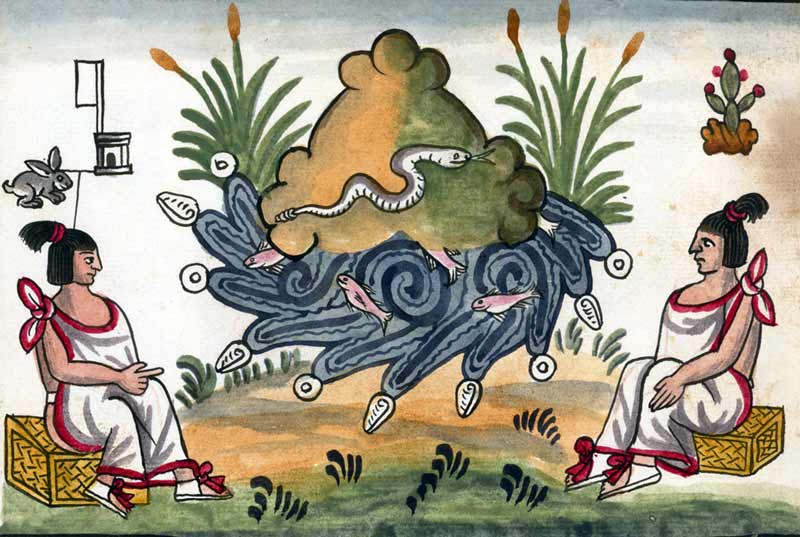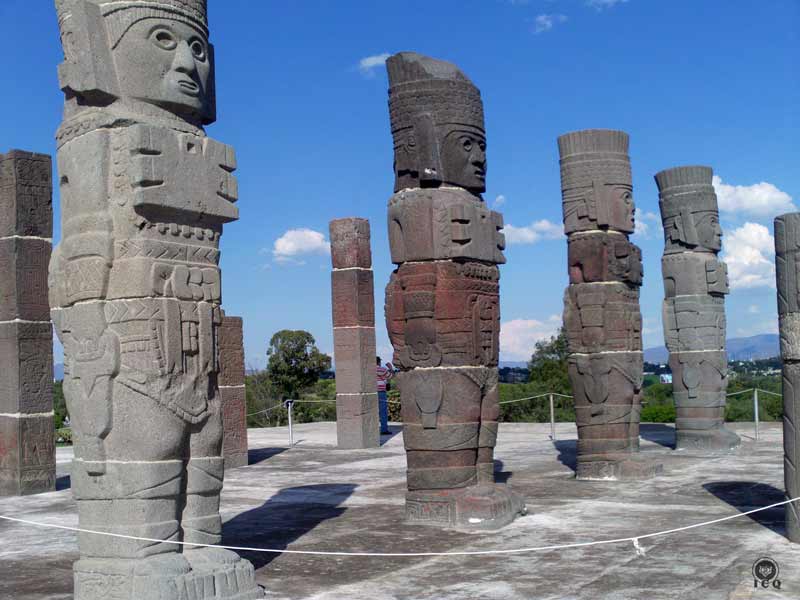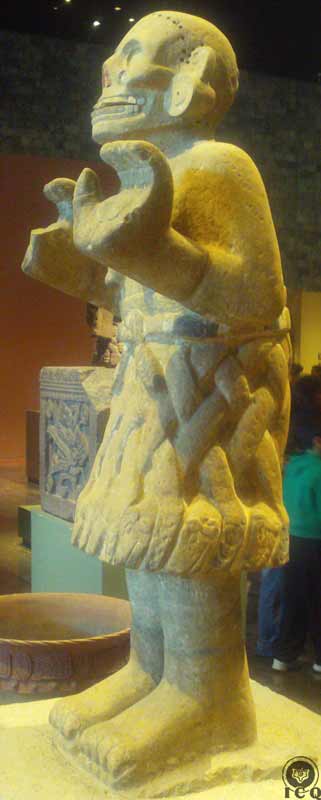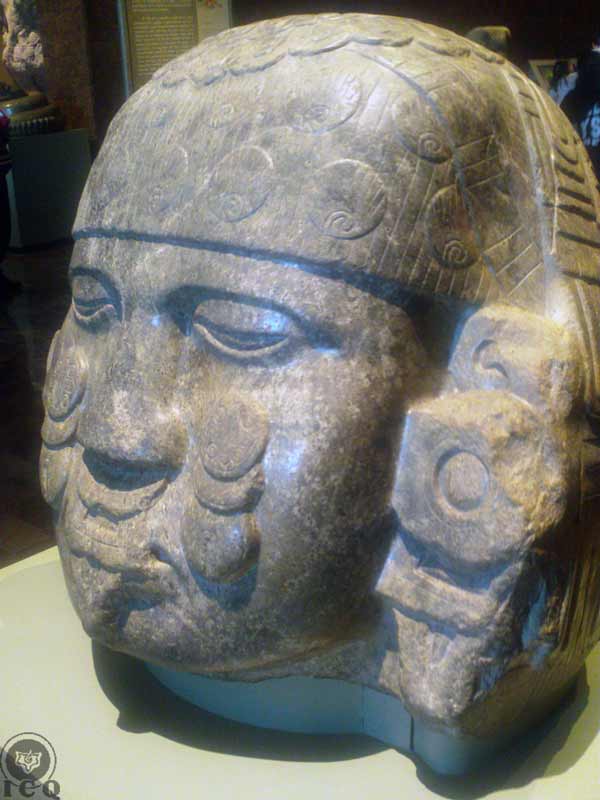The Birth of the Left-Handed Hummingbird [Huitzilopochtli]
Chapter 2 - The Initiation
The initiation is that collection of events in the path of life that when wisely and tenaciously managed, can lead us into the true light of immortal wisdom. Master Samael Aun Weor states:
"Initiation is your own life. The one who receives initiations is the Innermost. Thus, initiation has nothing to do with those fantastic tales which are so abundant in certain books. Thus, nothing is given to us for free. Everything has its price. Whosoever has not earned anything cannot collect anything. Initiations are payments that the Logos gives to human beings when the disciples have sacrificed themselves for humanity. Those who only preoccupy themselves with their own spiritual progress and do not work for others achieve absolutely nothing. Whosoever wants to progress must sacrifice the self for others. Initiation is this same life intentionally lived with rectitude and love."
The Florentine Codex continues:
"In Coatepec, on the way to the Land of Tula, a woman of name Coatlicue had been living. She was the mother of the Four-Hundred Southerners and these had a sister, whose name was Coyolxauhqui." Florentine Codex
The Hill of the Serpent [Coatepec]
This narration takes place – or perhaps should take place – in the "Hill of the Serpent" [Coatepec] that exists deep within our own selves.
Coatepec is composed of two words COATL (serpent) and TEPEC (hill), thus "Hill of the Serpent", and we find these two symbols used in other cultures and under the same context. The mountain (or hill) is a symbol of initiation and a symbol of the work that must be performed to reach degrees of perfection. As a simile, it is also the spiritual path because it is as arduous as the effort to climb a mountain. When we climb the mountain of initiation (life) we are faced with hazards and the danger of falling, and we must apply the necessary efforts and precautions to prevent a fall.
In addition, the "hill" or "mountain" is also combined with the symbol of the serpent, an allegory of esoteric knowledge and internal wisdom among the Aztec, the Maya and the Egyptians; also a symbol of the individual and particular Divine Mother of each one of us. It would be enough to remember the words of the Master Jesus when he sent off his disciples to share the wisdom and He asked of them to be "gentle as doves and wise as serpents". So it is the "Hill of the Serpent" [the Coatepec] the initiation itself, it is the path of life and the associated efforts that are necessary to return to the light.
"The Hill of the Serpent" [Coatepec] (Tovar Codex)
The Land of Tules [Tollan or Tula]
When the Codex states "on the way" to the mystical and sacred city of the "Land of Tules" [Tollan or Tula], it amazes with the reference to the very Isle of Tule so much spoken-off by Don Mario Roso de Luna. This is the fourth dimension, the Garden of Eden, the paradise described on the Genesis of Moses, the land of our elders, the ASGARD or land of the Nordic gods.
"Tula" relates to the mysteries of the path of internal purification, to reaching the threshold of the "Garden of Eden" or all that is eternal and divine.
"The Land of Tules" [Tollan or Tula]. Hidalgo, Mexico
The One with the Skirt of Serpents [Coatlicue]
COATL means "serpent" and TLICUE means "skirt".
She is the goddess of the Earth, mother of all that exists, is and has been born, and where everything manifests its life; she is a clear designation of the Eternal and Divine Feminine Principle. God as the Father is Wisdom and God as Mother, Love.
All that is divine can express itself through the woman, shown clearly by the mother who cares with devotion for her child, at times giving her own life for her children. It is important for us to understand that within each and every one of us, the divine feminine principle exists, but individualized.
"He who does not know of the laws of the Mother, will never reach the Father. Coatlicue is nothing else than the Blessed Mother, Goddess of Death." Samael Aun Weor
We all have our own particular Divine Mother and that is one of the greatest mysteries the student must discover within themselves; whenever we are faithful to our Divine Mother, she will guide us, care for us, protect us, and illuminate us.
In addition of the serpent being a symbol of occult knowledge, it is also an emblem of the creative force, thus the statement "The One with the Skirt of Serpents" [Coatlicue] is simultaneously a symbol of the sexual creative force, origin of all that is, has been and will be.
"The One with the Skirt of Serpents" [Coatlicue] (Museum of History and Anthropology, Mexico)
The One Adorned with Rattles [Coyolxauhqui] and the Four-Hundred Southerners
The number "400" amongst the Mexica was equivalent to "infinite" or "innumerable", because their number system was based on the number 20 and 20-times twenty is Four-Hundred. From a cosmic perspective this number is related to the innumerable stars in the firmament, but in the psychological universe of the human being, it is a representation of the innumerable psychological defects we carry within.
"The One Adorned with Rattles" [Coyolxauhqui] is the oldest sister and the rattles painted on her countenance are a symbol of desires and appetites (voluptuousness). Every sincere gnostic student knows the most difficult defect to eliminate is lust; she is an emblem of this psychological defect.
The narrative states these are the children of "The One with the Skirt of Serpents" [Coatlicue], not meaning these are the children of the Divine Mother; we must understand these defects are intimately related to the sexual fire, because the thousands of psychological defects we carry are born and strengthened with the incorrect use of our sexual energy. In this case the "serpent" must be understood to be the sexual fire, but the one we mismanage whenever we allow ourselves to be carried away with animal passion.
"We are not exaggerating in any way when we emphasize the basic idea that the "I's" that later emerge on the scene of existence are formed in the abdomen. Such psychological ideoplastic entities can never come into existence without the sexual agent." (Samael Aun Weor. The Mystery of the Golden Blossom)
All symbols carry particular meanings, according to the subject matter in question. This is why the teaching can never be interpreted literally with the use of the intellect. It becomes imperative to make use of more superior faculties, as is intuition, so that we can understand these mysteries with the faculties of the heart.
"The One Adorned with Rattles" [Coyolxauhqui] (Museum of History and Anthropology, Mexico)




